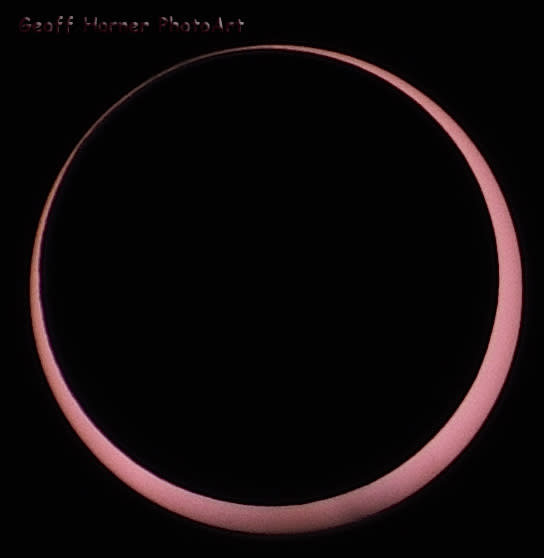 Science and Weather
Science and WeatherSolar eclipse will create dazzling ‘ring of fire’ in the sky this week

The Sun and the Moon will combine forces on Thursday night/Friday morning for a annular solar eclipse, creating a dazzling 'ring of fire' in the sky.
Saying 'Thursday night' when referring to a solar eclipse may seem strange, but this particular eclipse — an 'annular solar eclipse' — will start on Friday morning, just as the Sun is rising in western Australia, and it will spend the next four hours or so tracking across Australia and the equatorial Pacific Ocean. For those of us living on the other side of the planet, in North or South America, this will be happening on Thursday, between 6:30 p.m. and 10:30 p.m. EDT. So, it will be afternoon or evening, depending on where you live, and the Moon will be in the wrong position for us to see anything.
[ Related: Breathtaking video captures amazing views of Earth from space ]
Don't despair if you were looking forward to seeing this event, though. As usual, the team with the Slooh Space Camera will be covering the event, and broadcasting it free over the internet. They begin their live webcast on Thursday, at 5:30 p.m. EDT, and you can see it at events.slooh.com. Apparently, you can even download a free iPad app from the iTunes store, and then just tap on the 'broadcast' icon to watch.
(Update: you can also watch on a few other sites. Columbus State University's Coca-Cola Space Science Center is hosting a live webcast on their site (here). YouTube user Gerald Lazarus will apparently have something on his channel (here). There's also some expectation that New Zealand News and Sky News in Australia will have something as well.)
This annular solar eclipse is an interesting one. Typically when a solar eclipse is mentioned, thoughts go to the Moon completely blocking out the surface of the Sun, but in this case, we will still be able to see part of the Sun around the dark circle of the Moon. This is because the Moon's orbit isn't exactly circular. During some parts of its orbit it's closer to the Earth and during other parts it's further away.
When the Moon is closer to the Earth during a solar eclipse, it covers the entire surface of the Sun, but when it's further away, it only blocks most of it, letting brilliant 'ring of fire' peak around the edges.
[ More Geekquinox: Billions of sex-starved cicadas to invade the east coast ]
If you happen to be in northern Australia, or on a boat or island in the equatorial Pacific Ocean, enjoy the show on Friday morning (but don't look directly at the Sun of course), but if you're anywhere else in the world, tune in to watch the event with the Slooh team Thursday night. I know I'll be watching!
Geek out with the latest in science and weather.
Follow @ygeekquinox on Twitter!


